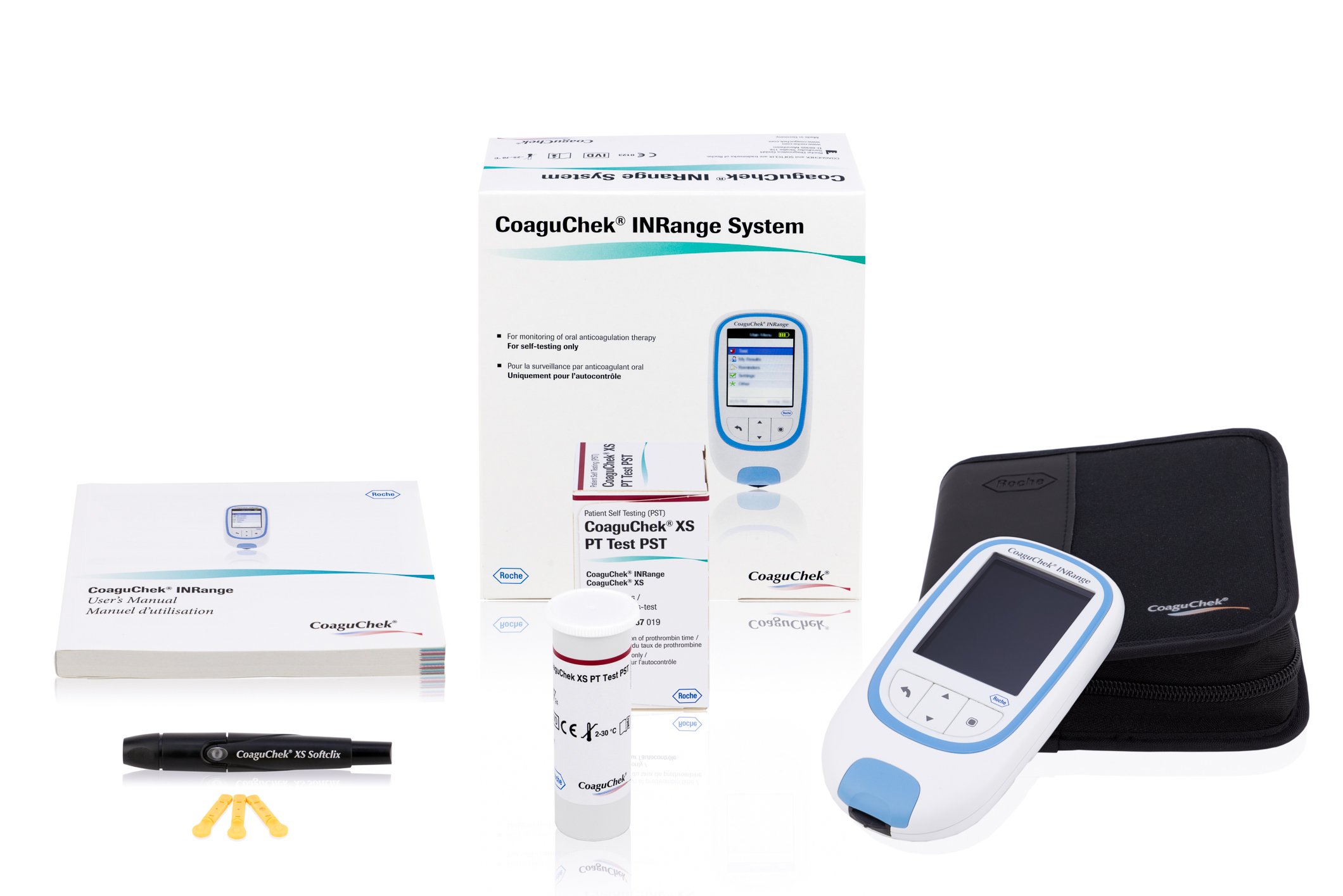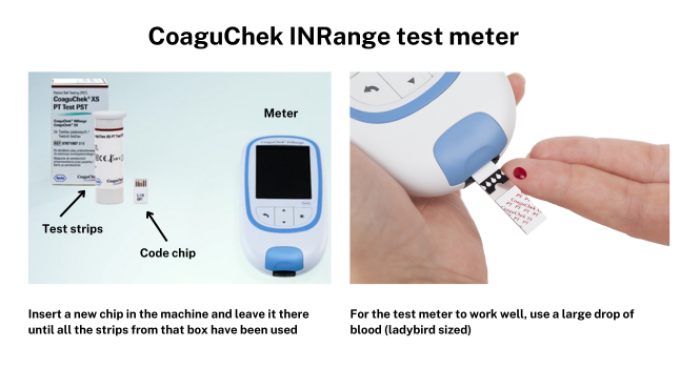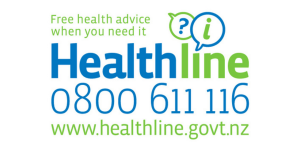INR test meter – CoaguChek
Key points about CoaguChek
- CoaguChek is an INR (international normalised ratio) test meter that helps you to check your INR at home.
- CoaguChek is used by people who are taking warfarin, a medicine used to treat and prevent clots in your blood.
- Coaguchek uses only a drop of blood from a finger prick to test your INR.

CoaguChek is an INR test meter that helps you to check your INR at home. It's used by people who are taking warfarin, a medicine used to treat and prevent clots in your blood. If you're taking warfarin, you will need to have blood tests that measure how long your blood takes to clot. The test is called an INR (international normalised ratio) test.
- The goal of warfarin therapy is to prevent blood clots. Having too little warfarin puts you at risk of your blood clotting and having too much warfarin puts you at risk of bleeding.
- The effect of warfarin must be monitored carefully with blood testing. INR tests are very important to decide on the best dose of warfarin for you.
- Ask your healthcare provider what your target INR is. Read more about warfarin and INR.
In Aotearoa New Zealand, the meter that's available for home use is called CoaguChek INRange meter.
Note: Some people may have the previous model called CoaguChek XS.
How often should I check my INR?
Before you start testing on your own, your healthcare provider will need to make sure that your warfarin dose is stable.
- Follow your healthcare provider’s advice about how often you should check your INR, this is usually every 1 to 4 weeks.
- Talk with your healthcare provider before making changes to any of your medicines, as this could affect your warfarin dose or monitoring.
- Also, tell your healthcare provider about any changes to your general health or diet because certain foods, such as leafy greens and some herbal supplements, can affect your body’s response to warfarin. Read more about warfarin and diet.
Options to get your INR checked
- You can get your INR checked for free at a blood collection centre (such as MedLab) and some community pharmacies, that offer the CPAM service. Your pharmacist will check your INR with their own CoaguChek® machine and adjust your warfarin dose as necessary. This option can be arranged through your GP. Learn more: Where can I get my INR tested.
- Having a CoaguChek® machine means you can do your own INR test with a simple finger prick and manage your warfarin dosing in partnership with your GP. This is especially valuable if you live some distance away from your GP or blood testing facility or are out of town on holiday. Also, if you are unwell, you can check your INR to reassure yourself it is within your normal range.
In Aotearoa New Zealand, the meter that's available for home use is called CoaguChek INRange meter. Some people may have the previous model called CoaguChek XS.
To use the meter, you will need:
- lancets (prickers)
- a lancing device
- CoaguChek® strips
Learning to use your CoaguChek meter
If you're not sure how to use your CoaguChek meter, get in touch with the person or organisation who provided you with your machine. This could be your GP, nurse specialist, pharmacist or a nurse at your GP surgery. Some cities have a representative from the company supplying your meter and they will be able to teach you if they are available.
Image credit: Healthify He Puna Waiora (images used with permission from Roche)
Tips when using your test meter
- Code chip: Each new box of testing strips comes with a code chip. This gives lot specific information to the CoaguChek machine such as the expiry date and lot number. Insert the new code chip in the machine and leave it there until all the strips from that box are used.
- Make sure your hands are clean: Wash and dry your hands and fingertips thoroughly before testing. Any moisture can give inaccurate results.
- Pricking your finger: Prick your finger on the side (towards the tip) rather than on the pad (or tip). This will be more comfortable for you afterwards, especially if you use a keyboard. You'll get a much better sized drop of blood if your hands are warm before testing.
- Aim for a drop of blood the size of a large ladybird: For the test meter to work well, the drop of blood needs to be adequate. If the drop is too small, the machine will not be able to read it, causing an error message. To increase blood flow to the fingers, warm your fingers before testing and massage gently toward the tip of the finger.
- The lancets (prickers) should be changed at least every 2 or 3 days. This reduces pain and the risk of infection.
Doing the test
- Place the machine on a firm, level surface. The machine should not be moved during testing. It may be helpful to place the machine so that the strip overhangs the edge of a table to allow more space for you to place the drop of blood.
- Gently push a test strip, with its contact bars facing up, into the test strip port at the bottom of the meter. This will turn the meter on.
- Do not bend the strips as this will damage the strip and the electronics in it.
- Gently massage and then prick your finger, halfway between the middle of your finger and your nail, to obtain a blood drop.
- Aim for a drop of blood the size of a large ladybird.
- Apply the drop of blood to the clear part of the strip either from the side or from above.
- It's important to apply the blood drop within 15 seconds of lancing/pricking, once the 3 minute/180 second countdown begins. If it takes longer than 15 seconds to get a drop of blood pull out the testing strip and start again.
- Wait for the meter to count down and then it will show the result.
Watch the video and read more about how to use CoaguChek INRange meter(external link).
Recording your INR
It's important to record your INR result. The CoaguChek INRange meter has a memory capacity to store up to 400 test results and you can download results via USB to a computer. You can also record your INR result in a notebook, diary, the anticoagulation booklet (also called the warfarin red book) or an app to record your INR result. See warfarin and INR diary and warfarin apps.
Cleaning and storage
- For the CoaguChek® strips, keep the lid on the container and store at room temperature.
- If travelling they may need to be kept in a cool bag so they don't overheat.
- To clean your machine gently wipe it with a damp, lint free cloth.
- You can also pull the blue tab up to clean underneath if blood has gotten into this.
Ordering equipment
You are responsible for the ongoing purchase of the CoaguChek® strips and lancets. Prices may vary across pharmacies so it’s best to shop around including checking online pharmacies in New Zealand. When ordering the test strips, consider how frequently you are testing and the expiry date of the test strips. It’s usually around 12 months after purchase.
Note: For the machine, use good quality alkaline batteries as cheaper batteries can alter the machines electronics.
Disposing of your testing supplies
You can place used test strips in the general rubbish. Lancets (finger prickers) must be disposed of in a sharps bin. Read more about the safe disposal of syringes, needles and sharps.
If you have problems with your test meter
- Firstly, try to contact the person or organisation that first gave you your coaguchek machine. If they are unable to assist.
- Contact a community pharmacy(external link) that provides a warfarin INR testing service (called CPAMS(external link)). They may be able to help you.
- You can also contact Roche diagnostics on their CoaguChek Line 0508 695 433.
If your INR result is outside your target INR range
Your health care provider will tell you your target INR range when you're prescribed an INR test meter. If the INR result is outside of your target INR range, contact your healthcare provider immediately.
Signs of bleeding
Contact your healthcare team or Healthline on 0800 611 116 immediately if you notice these signs of bleeding:
- red or brown pee, or black poo
- brown or black vomit that looks like coffee grounds
- unusual bruising
- nosebleeds
- heavy periods (menstrual bleeding)
- coughing up blood or brown spots
- severe headaches, feeling dizzy or weak
- bleeding a lot after a cut or fall
- trouble swallowing
- severe indigestion, heartburn, or stomach pain.
References
Brochures
Credits: Sandra Ponen, Pharmacist, Healthify He Puna Waiora. Healthify is brought to you by Health Navigator Charitable Trust.
Reviewed by: Jenni Wallace, Cardiothoracic CNS / Coordinator | Te Whatu Ora Christchurch; Johanna Lim, Clinical Pharmacist – Cardiology Expert, Health New Zealand | Te Whatu Ora Te Matau a Māui Hawke’s Bay; Angela Lambie, Pharmacist, Auckland
Last reviewed:
Page last updated:






